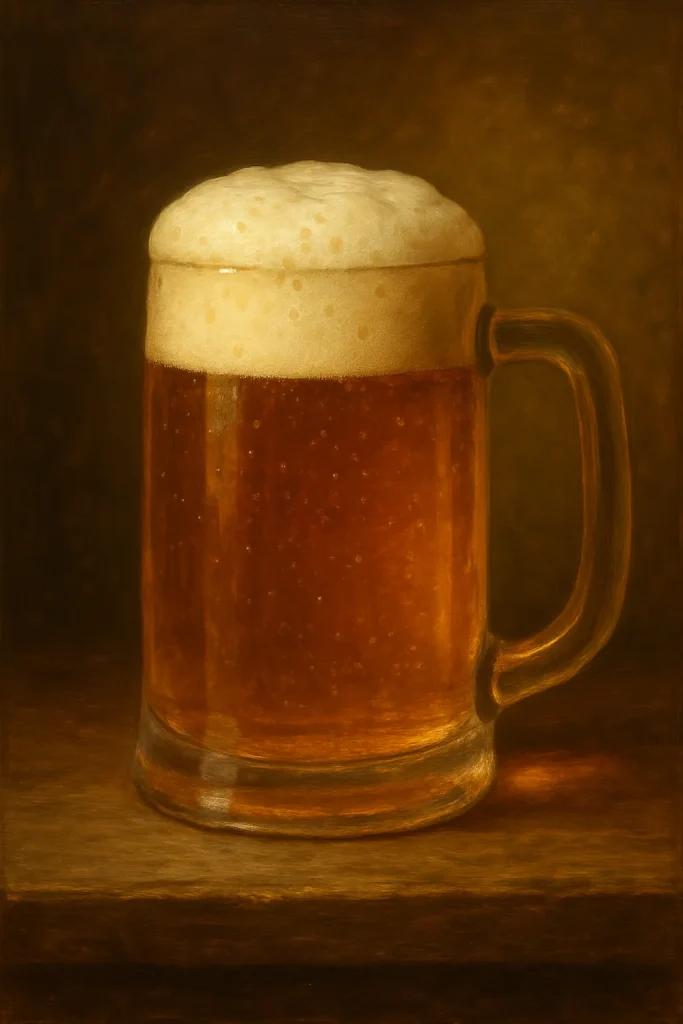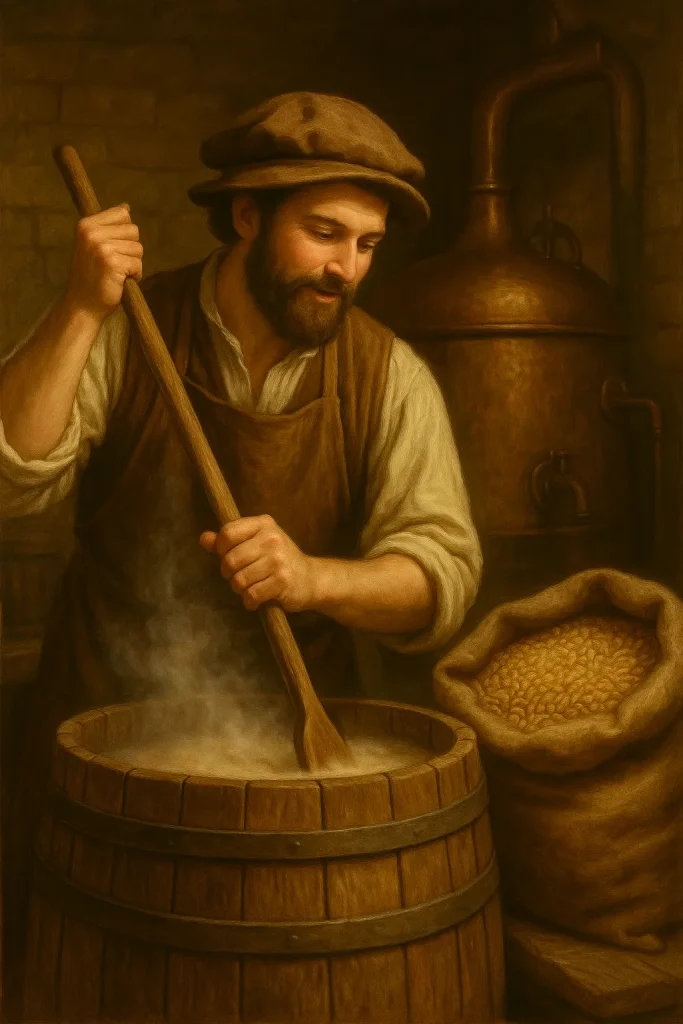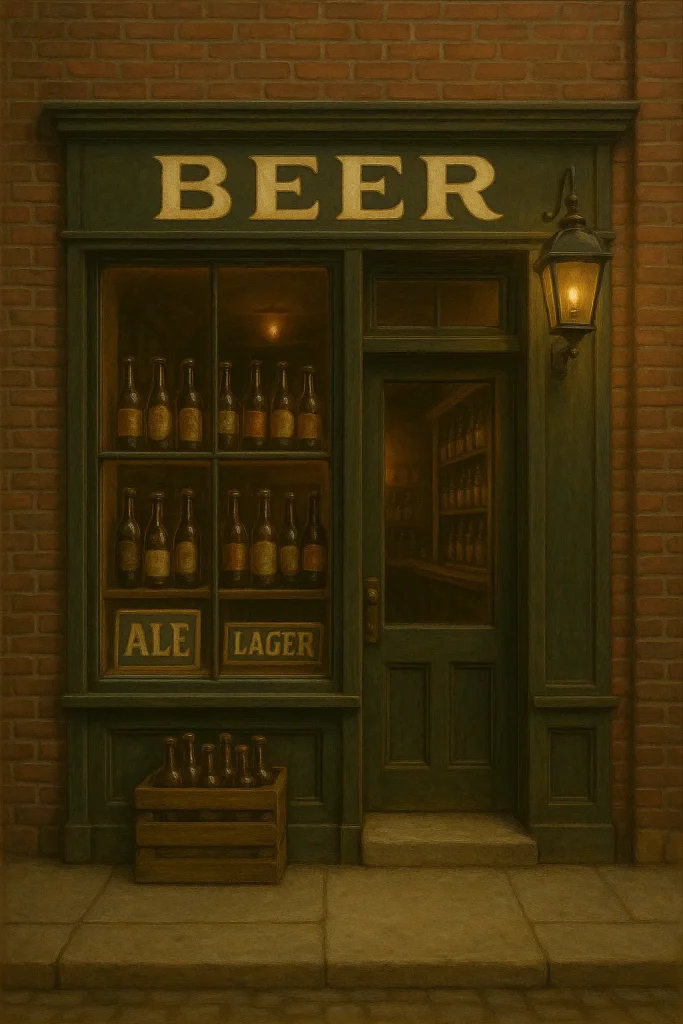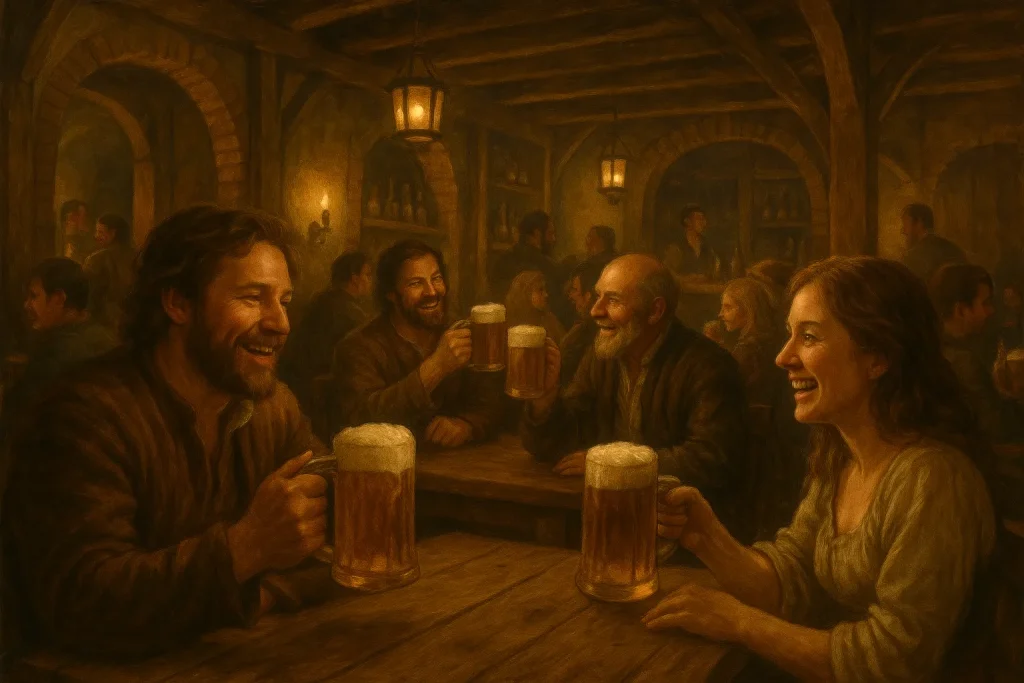Introduction
Beer is one of humanity’s oldest drinks, a companion through centuries of celebration, survival, and innovation. From its beginnings in ancient villages to its place in today’s pubs and festivals, beer has shaped cultures and connected people. The history of beer spans thousands of years, reflecting changes in farming, trade, and technology. This article explores how beer came to be, how it evolved across eras, and why it remains a beloved part of life. We journey through its origins, its spread across the globe, and its modern transformations, uncovering the story of a drink that feels both timeless and ever-changing.

The Dawn of Ancient Beer
Long before written records, around 9000-7000 BCE, people in the Fertile Crescent began farming grains like barley and wheat. One day, perhaps by chance, soaked grains in a clay jar started to bubble and ferment, touched by wild yeasts in the air. This was ancient beer, a thick, nourishing drink unlike the clear brews we know today. Pottery shards from Godin Tepe, in what’s now Iran, dated to 3500-3100 BCE, carry traces of beerstone, proof of early brewing.
In Sumerian cities like Uruk, beer was more than a drink—it was life. People sipped it through straws to avoid gritty bits, and it doubled as food, packed with calories. Sumerians wrote poems to Ninkasi, their brewing goddess, whose hymns included recipes mixing barley bread with water. In ancient Egypt, around 3000 BCE, everyone drank “heqet,” a barley beer flavored with dates. It was safer than river water and fed workers building the pyramids. Beer was so vital that pharaohs stocked temples with it, blending faith and daily life.

Medieval Brewing and Early Innovations
As the Middle Ages dawned in Europe, monasteries became the heart of beer brewing. Monks brewed in stone cellars, serving their beer to travelers and villagers. In a time when water was often unsafe, beer was a trusted choice, especially in growing towns. Early medieval beers used herbs like rosemary or bog myrtle, giving them earthy flavors. Around the 9th century, brewers began adding hops, a plant that preserved beer longer and gave it a crisp, bitter taste.
Hops changed everything, making beer a tradeable good. In Bavaria, rules like the Reinheitsgebot of 1516 set standards, allowing only water, barley, and hops (later yeast). Centuries earlier, Babylon’s Code of Hammurabi had regulated brewing, showing beer’s deep-rooted importance. When the Age of Exploration began, ships carried beer to keep sailors healthy, its nutrients vital for long voyages. European brewing techniques spread to new lands, adapting to local grains and climates, weaving beer into global cultures.

The Industrial Revolution and Beer’s Global Reach
The 1700s brought the Industrial Revolution, and with it, the history of beer transformed. Brewers embraced science and machines to make beer faster and better. In 1857, Louis Pasteur showed that yeast, tiny living organisms, drove fermentation, letting brewers fine-tune flavors. A new machine, the drum roaster, invented in 1817, toasted barley into dark malts, birthing beers like porters and stouts with rich, smoky tastes. Steam-powered breweries churned out barrels to quench city thirst.
After the Age of Exploration, beer became a global business. In the 1840s, German immigrants brought lager to America, a light, refreshing beer perfected with new cooling machines. Breweries like Anheuser-Busch grew huge, bottling beer for homes across the country. Railroads carried it far and wide, making beer a daily staple. Some brewers tinkered with old recipes, using unique grains or yeasts, keeping the craft alive even in an industrial age. Beer was no longer just a village drink—it was a worldwide industry.

Modern Brewing and Creative Revival
Today, beer balances mass production with bursts of creativity. Giant breweries pump out billions of liters, but smaller ones have sparked a revival since the 1970s. These brewers, inspired by ancient beer, play with ingredients like spelt or wild yeasts, crafting beers that taste of history. Others make hop-heavy IPAs or tangy sours, drawing crowds to taprooms. This craft beer movement echoes the days when Sumerian women brewed for their communities, blending tradition with new ideas.
Beer’s cultural role shines in events like Oktoberfest, where millions gather, or in quiet pubs where friends share stories. Ancient Chinese brews from 7000 BCE, made with rice and fruit, inspire modern experiments, linking past to present. In the Age of Exploration, beer crossed oceans; now, it brings people together, from Tokyo to Dublin. The history of beer shows a drink that evolves with us, reflecting our tastes, technologies, and need for connection.

Leave a Reply